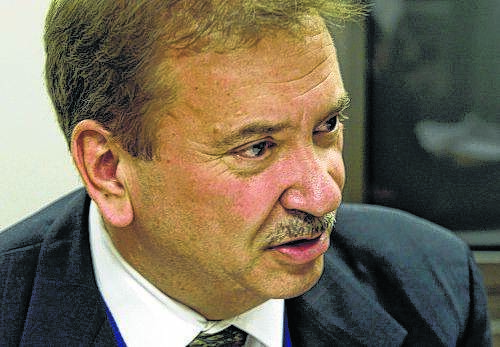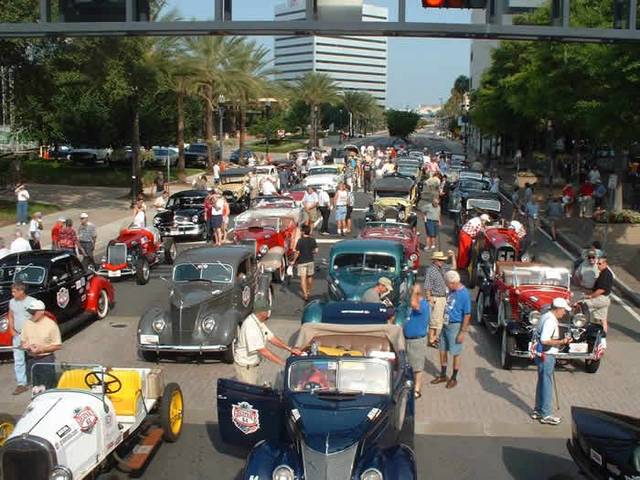
Bill O’Boyle

A typical scene from the Great American Race.
Photo courtesy of The Great American Race
Related Articles
The Great American Race in 1986 was a great experience for me.
When I was asked to cover the cross-country timed road race featuring antique, classic and vintage cars, I was thrilled. The race began in Anaheim, California, and snaked across the U.S., ending in New York City.
But the really neat thing was The Great American Race awards banquet was held in Wilkes-Barre. The race ran through Wilkes-Barre on its way to NYC and the cars staged in Kirby Park. They all returned to Wilkes-Barre after the race was completed.
It was an unbelievable event that featured some of the most interesting characters I have ever met and the cars — oh, the cars — were magnificent.
Each day, we would start out and travel to a town for lunch, then get back on the road and drive to the overnight destination. As I recall, we visited towns like Needles, California, where it was 103 in the shade of the Greyhound Bus Station.
We also stopped in Kingman, Arizona, where we saw many of the old locomotive steam engines and then at the Grand Canyon — magnificent.
Some more highlights:
• Eating rattlesnake at the Big Texan Steakhouse in Amarillo.
• Seeing the arch in St. Louis and stopping in a beautiful park in Rolla, Missouri.
• The Mississippi River.
• Driving on every mile of what was left of the original Route 66.
• Driving around the brickyard track at the Indianapolis Motor Speedway.
• Watching all those historic cars head into Manhattan with the glorious skyline in the distance.
• Eating smoked alligator in Alexandria, Va.
• Staging the cars on the National Mall in Washington, D.C.
• Feeling proud as thousands of NEPA residents stood on overheads along I-81, waving banners and flags and cheering as the cars drove by.
• Seeing the tremendous crowd that came to Kirby Park to see the cars and meet the drivers/owners.
There were many more memories — all good.
This was a fun event.
I also got to meet, know and respect Durland Edwards, a man who loved cars. Edwards, now deceased, had a garage in Swoyersville and later lived in Tunkhannock. He drove his 1936 Ford Phaeton dubbed “The Spirit of Wilkes-Barre” in the race. He competed in the event in 1987 and again in 1988.
Edwards represented the area with class, and he loved every minute of it.
The Great American Race is not won by the fastest car — each leg of the race is timed, with specific instructions on how fast the car can go from point to point and the racer who adheres best to the instructions is judged the winner of that leg. Points are awarded to the driver and navigator who come closest to matching a predetermined “perfect time.”
Each day of the event, I would seek out Edwards to ask him how he did and he would offer comments about that particular day’s leg. He was always engaging and he always had a good tale to tell of his time on the road. You could tell he enjoyed every second of the event and he was proud to represent his home area. The Times Leader sponsored Edwards in the 1986 race.
He graduated from Swoyersville High School in 1949.
I was fortunate to meet a few of The Great American Race officials. Phil Cole handled the media for the race. Norm Miller owned Interstate Batteries, the main sponsor of the race.
Cole hooked me up with Ron McQueeney who was the official race photographer. McQueeney’s real job was director of photography at the Indianapolis Motor Speedway. He and I hit if off. I would drive to the lunch stop, pulling over for McQueeney to get a few scenic photos of the cars rolling by. At lunch, I would interview a few drivers and then McQueeney would drive to the overnight stop while I wrote stories for the next day.
The arrangement worked out perfectly.
And Wilkes-Barre really did The Great American Race well and the officials were quick to acknowledge that.
“We’d very much like Wilkes-Barre to host us again,” Cole said a few years later. “Two of our very best stops have been in Wilkes-Barre.”
Thousands of spectators came out when Wilkes-Barre served as a stop-over site in 1986 and 1988 — infusing thousands of dollars into local businesses.
About 100 classic cars raced in the 13-day, 4,000-mile event every year.
“It’s good for the community,” Edwards said after one race.
Indeed it was.
And it was an experience this reporter will never forget.
"really" - Google News
June 28, 2020 at 04:29PM
https://ift.tt/3i7ZKML
Beyond the Byline: It really was The Great American Race - Wilkes Barre Times-Leader
"really" - Google News
https://ift.tt/3b3YJ3H
https://ift.tt/35qAk7d
Bagikan Berita Ini














0 Response to "Beyond the Byline: It really was The Great American Race - Wilkes Barre Times-Leader"
Post a Comment